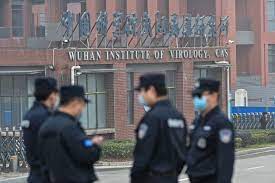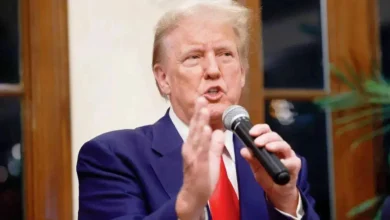Interpreting China: Could Beijing emerge as a naval force in the Pacific?
Concerns about a potential military confrontation in the Taiwan Strait are growing.
Beijing considers Taiwan to be a province of China, and the People’s Republic of China wants to unite the two countries—by force if necessary.
Premier Li Qiang reiterated Beijing’s unwavering commitment to “resolutely advance the cause of China’s reunification” when he delivered his government’s work report to the National People’s Congress (NPC), China’s rubber-stamp parliament.”This is a component of the administration’s “whole plan,” he said.

The proclamation itself is not new, but prior to “reunification,” the word “peaceful,” which was used in earlier declarations, was absent.
From Beijing’s perspective, the region’s security concern originates from the US’s provision of security assurances to Taiwan’s formal name, the Republic of China. US media reports state that five US aircraft carriers are now stationed in the Pacific area.
More and more Chinese policymakers are speaking of “peace and security on both shores,” a term that many observers feel now encompasses the whole Pacific Ocean rather than simply the Taiwan Strait.
Beijing has been attempting to strengthen its still-weak fleet in order to consolidate control over the disputed waterways.
About 2,000 kilometers (1,242 miles) separate the southernmost point of the South China Sea from the Chinese mainland.
Furthermore, Beijing is making an effort, with the assistance of its aircraft carriers, to preserve and bolster its naval presence in the area.
There are two active aircraft carriers and two more are under construction.
The Liaoning and the Shandong are the two aircraft carriers that the Chinese Navy now operates.
In 1998, China paid around $20 million (€18.3 million) to China via a broker in Macau for the Soviet-built Liaoning. At first, the businessman had said that he wanted to construct a floating casino and hotel.
However, the Liaoning was transformed into a functional aircraft carrier via refurbishment and turned over to the Chinese military in 2012.
The Shandong, the second carrier, is an indigenously made replica of the Liaoning. Since going into service in 2019, it has mostly cruised the South China Sea.
These two ships are propelled by conventional oil-fueled steam turbine power systems rather than nuclear power. These carriers lack a catapult mechanism and instead employ a ski-jump-style platform for jet takeoff.
Launched in 2022, the third carrier, the Fujian, is now moored at a Shanghai shipyard for outfitting and mooring trials.
Similar to the other two carriers, the Fujian is propelled by traditional means. It is anticipated to go into operation in 2025.
There is much conjecture that China is constructing a fourth aircraft carrier.
On the fringes of the NPC meeting this year, Yuan Huazhi, the Chinese navy’s political commissar and admiral, seemed to corroborate the reports.
“I am not aware of any technical difficulties regarding the fourth aircraft carrier,” he said.
In a vague response, Yuan said that information on China’s newest carrier’s nuclear propulsion “will soon be announced.”
Two additional aircraft carriers fueled by nuclear power?
Prior to the commencement of the NPC meeting, media outlets in Taiwan and Hong Kong said that construction was under way on two more nuclear-powered aircraft carriers. It was claimed that two thorium molten salt reactors that produce electricity via nuclear fission should power each of these boats.
“China wants to clearly show its strong ambition to defend its waters with a modern navy,” said Wang Feng, editor of Taipei, Taiwan’s capital, China Times, a daily published in Chinese.
He said, “After a string of deadly maritime incidents with neighboring countries, this is an effective deterrent tactic.”
However, Chinese Admiral Yuan adhered to the official position.
“We are not constructing aircraft carriers to compete with the United States and most definitely not to go to war with them. They will be used by us to protect our territorial integrity and sovereignty.”
growing costs for the military
China’s expanding military ambition is reflected in its growing defense spending. China’s military budget is expected to reach €215.5 billion this year, up 7.2% from the previous year and representing 1.2% of the country’s overall economic output.
China is the world’s second-biggest military spender, behind the United States, according to the Stockholm International Peace Research Institute.
One of the main pillars of China’s military policy is the navy’s strengthening.
Since the conclusion of World War II, military technology has undergone significant transformation, according to Charles Martin-Shields, a researcher at the German Development Institute. “A modern navy no longer needs island chains as supply bases for refueling in order to control the vast Pacific,” according to the statement made about nuclear-powered aircraft carriers.
Some commentators believe that the upcoming May presidential election of Beijing-critical Lai Ching-te will contribute to the rising military tensions in the area.
“China and the US are not interested in a military confrontation, in theory,” Hanna Gers of the German Council on Foreign Relations said. “In my opinion, economic blockades are more probable. However, I am also aware that every option is being explored in this instance.”
Chinese aircraft carriers are still operating in their home seas as of right now.
However, Yuan, a top Chinese military officer, has begun to make suggestions on the potential for Chinese naval deployments abroad. “Aircraft carriers are being built for this,” he said.
One potential test scenario might be the Middle East situation.
The Houthi terrorist organization in Yemen has limited commercial transportation in the critical waterway by attacking civilian ships in the Red Sea. “The trade routes through the Red Sea are of strategic importance for China’s energy supply,” Wang said. But as of right now, the Chinese military is unable to conduct defensive maritime security operations.
Another justification for modernizing the fleet is provided by the circumstances: “After all, it’s about state security.”







